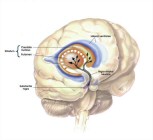 Below is an excerpt from the novel Bedlam by Jennifer Higgie which gives a fictional account of the travels and madness of Victorian artist Richard Dadd.
Below is an excerpt from the novel Bedlam by Jennifer Higgie which gives a fictional account of the travels and madness of Victorian artist Richard Dadd.
Dadd was eventually confined to Bethlem Hospital and subsequently to the then ‘Broadmoor Asylum for the Criminally Insane’ (now Broadmoor Hospital) for the murder of his father and attempted murder of a tourist while being tormented by paranoid delusions.
Dadd was allowed to keep painting in hospital and produced some of the most important artwork of the era.
From p144 of the novel:
I find myself gazing at sand and seeing green hills.
I notice hideous faces glaring at me from the faces of sweet young girls.
I the silhouette of a pig in the mild eyes of a camel.
I lie stuck to my bed, covered in sweat as the mattress breathes and groans beneath me.
I have forgotten the names of my own sisters and brothers.
I speak happily, for hours, with my dead mother, whose hand I feel stroke mine, and curse the breath of my father, who is revealed to me as an impostor of the highest order.
I walk in sunlight and feel the hot glare of the moon burn my skin.
I see scorpions the size of men haunting ruins.
I crash into walls I do not see.
I pluck poisonous flowers and dream I boil them for tea.
I spend hours polishing teaspoons I do not need.
I long to dilute my colours with mirages, to make them hot and trembling.
Link to details of Higgie’s Bedlam.
Link to Wikipedia page on Dadd.
 What do you do with a psychotic astronaut? If you’re not sure, the Houston Chronicle
What do you do with a psychotic astronaut? If you’re not sure, the Houston Chronicle  NPR Radio has a fantastic
NPR Radio has a fantastic  An excerpt from the entry for the psychedelic drug
An excerpt from the entry for the psychedelic drug  CBC News is
CBC News is  The LA Times has an interesting
The LA Times has an interesting  The
The  As an intriguing follow-up to our recent
As an intriguing follow-up to our recent  NPR has recently broadcast a short
NPR has recently broadcast a short  Psychiatrist Edward Hume has
Psychiatrist Edward Hume has  According to BBC News
According to BBC News  BBC Radio 4’s medical programme Case Notes recently had a
BBC Radio 4’s medical programme Case Notes recently had a 
 Below is an excerpt from a review,
Below is an excerpt from a review,  The fruit pictured on the right is called a
The fruit pictured on the right is called a